Introduction
Many gynecologists believe in supracervical hysterectomy for many reasons, such as less intraoperative blood loss, reduced surgical time, prevention of postoperative lower urinary tract symptoms, maintenance of normal sexual function, and fewer postoperative complications [
1]. On the other hand, supracervical hysterectomy has many complications, such as increasing the incidence of cervical cancer, requiring a long follow-up period, and may cause irregular bleeding. Many gynecologists do not advocate this type of hysterectomy, and the previously mentioned claims are not significant enough to recommend supracervical hysterectomy to be superior to total abdominal hysterectomy [
2,
3].
Many patients experience abnormal genital bleeding after supracervical hysterectomy owing to polyps, cervicitis, or more severe stump carcinoma. Cervical polyps may be indicative of cervical or endometrial pathologies. Recent studies have reported that cervical polyps were associated with premalignant lesions in 2% of cases, and more seriously, 0.3% were associated with malignant lesions [
4,
5]. Other common symptoms after supracervical hysterectomy are abnormal offensive discharge, chronic pelvic pain, and impaired sexuality. These patients seek medical advice to resolve their symptoms in gynecological or oncologic clinics [
6].
The management of these patients requires proper assessment using ultrasound, magnetic resonance imaging, and biopsy before any surgical intervention. Multidisciplinary team management is ideal for these patients, including senior gynecologists, oncologists, urologists, and gastrointestinal surgeon [
7].
This study assessed the feasibility, safety, and surgical outcomes of laparoscopic trachelectomy in symptomatic patients after supracervical hysterectomy and subsequent histopathological examinations.
Go to :

Materials and methods
1. Study design and settings
This descriptive cross-sectional study was conducted at the departments of obstetrics and gynecology at Tanta University, Benha University, and Aminah Laparoscopy Center (Benha, Egypt), in the period from June 1, 2018 to October 31, 2021.
2. Forty patients
Who underwent supracervical hysterectomy were included in this study. The inclusion criteria were as follows: (a) symptomatic patients with pelvic pain, discharge, or bleeding; (b) non-symptomatic patients with an abnormal pap smear at their routine follow-up; and (c) preinvasive cervical lesions as cervical Intraepithelial Neoplasia. The exclusion criteria were: (a) any stage of cervical carcinoma, (b) presence of hydroureter or hydronephrosis, (c) unfit for laparoscopy, (d) no previous cervical biopsy, and (e) refusal to participate in the current study.
3. Methods
A complete history was obtained from all patients, including age, parity, body mass index (BMI), indication for hysterectomy, place of hysterectomy, duration since hysterectomy (interval), main symptoms, and any associated medical condition. Pelvic examination was performed to assess the length and mobility of the cervix. Routine preoperative investigations, including laboratory tests and ultrasound examinations, were requested for all patients.
Before trachelectomy, cervical biopsy was performed in all cases to detect any malignancy. The biopsy was performed using punch biopsy forceps on an outpatient basis. Biopsy samples were sent to pathologists to examine for malignancy. Malignant patients were referred to oncologists and excluded from the study.
4. Preoperative preparation
Patients were instructed for an 8-hour fasting before the surgery. Gastrointestinal preparation in the form of bowel enema was performed twice: 12 hours and 6 hours before surgery. Patients were advised to consume Macrogol 3350 (Prepawest®; Western Pharmaceutical, Obour, Egypt) with one sachet dissolved in a liter of water and drunk in 1 hour twice with the last sachet 8 hours before surgery to ensure complete and empty gastrointestinal tract. Two or three units of cross-matched blood samples were prepared.
5. Operative details
The patients underwent surgery under general anesthesia. At the beginning of the surgery, an anesthesiologist inserted a nasogastric tube (Ryle’s tube®; Ultramed, Cairo, Egypt) into the empty gastric contents and fluids.
Abdominal insufflation was performed using a closed method with a Verres needle at the Lee-Hwang point. Three ports were used: the first trocar (10 mm) was inserted at the Lee-Hwang point, and the other two ports (5 mm) were inserted in the midclavicular line two fingers above the anterior superior iliac spine, as shown in
Fig. 1. If adhesions were encountered at these port sites, a Palmer’s point port was inserted to facilitate adhesiolysis.
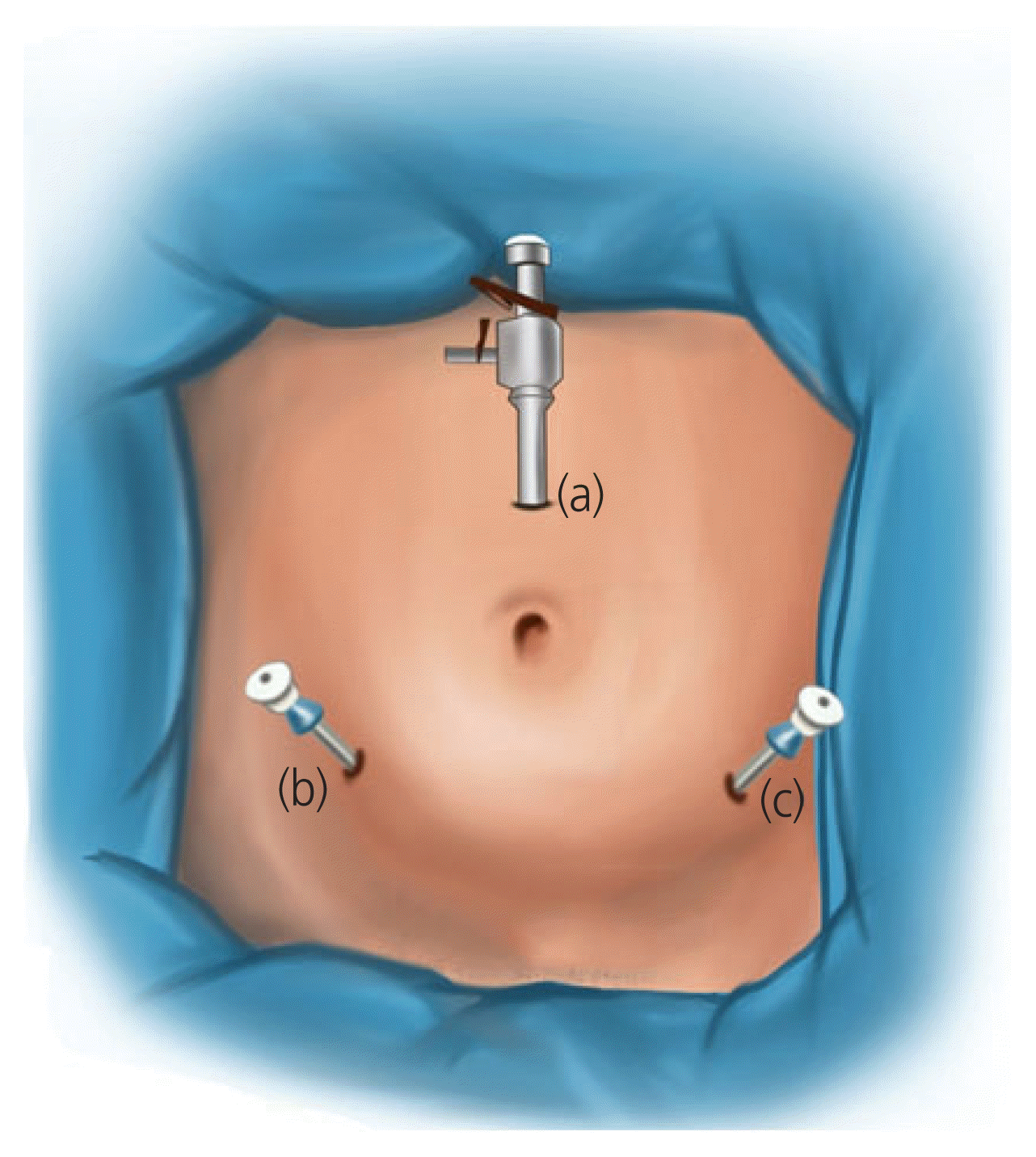 | Fig. 1Position of ports in laparoscopic trachelectomy (a) 10 mm port at Lee-Hwang point, (b) and (c) 5 mm port at midclavicular line, two fingers above the anterior superior iliac spines. 
|
Adhesiolysis was performed using graspers and scissors or graspers and electrosurgical devices, either bipolar vessel sealing (Ligasure
®; Covidien, Mansfield, MA, USA) or harmonic scalpel (Harmonic ACE
®; Ethicon, Cincinnati, OH, USA). After complete adhesiolysis, dissection of the bladder flap downward from the cervix was performed either harmonically or mechanically using electrosurgical devices (
Fig. 2).
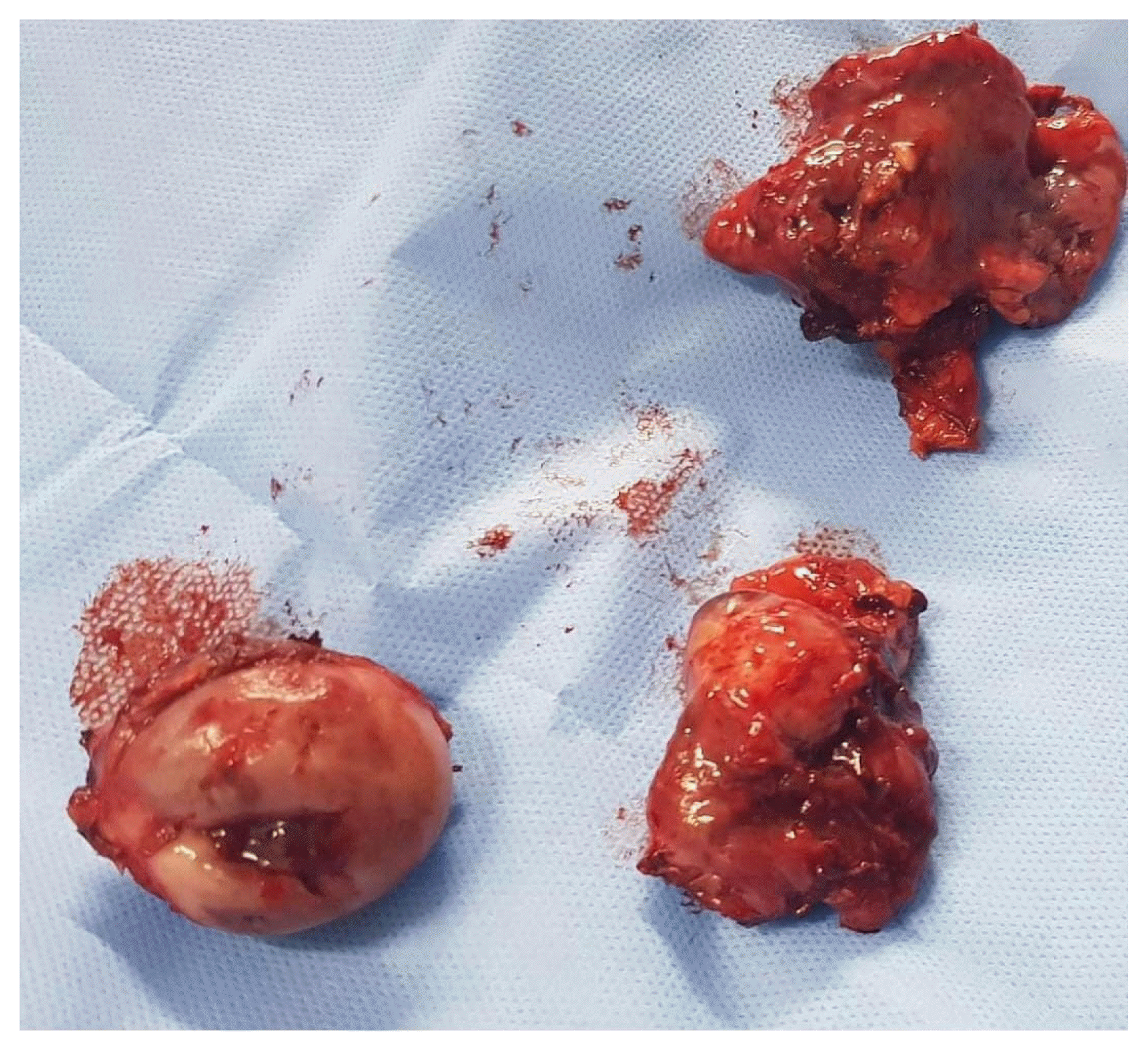 | Fig. 2Cervical stump and bilateral adnexa. 
|
A Mangeshkar colpotomizer cup (Mangeshkar
®; Golden Nimbus, India) was inserted vaginally and pushed upward (cephalad) to delineate the cervical stump. The stump was closed laparoscopically using either intracorporeal or extracorporeal knots. Dissection of the bladder flap up to 2–3 cm below the colpotomizer cup commenced, as shown in (b) of
Fig. 1. The cervix was removed vaginally with a laparoscopic hook (monopolar current).
Inspection of the bowel for any injury or bleeding from the dissection was meticulously conducted. Any gastrointestinal tear or laceration was managed laparoscopically. The bladder was filled with 300 mL of saline with methylene blue to check for tears or leakage. The urologist repaired tears or injuries. An intraperitoneal drain was routinely administered to all the patients.
Formalin-fixed, paraffin-embedded blocks of cervical specimens were obtained from all the patients after trachelectomy for histopathological examination.
6. Postoperative care
Postoperative follow-up was conducted for vital signs, drains, urinary catheter, postoperative hemoglobin, ultrasound before discharge, and any complications.
7. Data collection
All data concerning demographic characteristics, history of hysterectomy, main symptoms, biopsy results, preoperative hemoglobin level, operative time, blood loss, intraoperative complications, postoperative hemoglobin, need for blood transfusion, intensive care unit stay, hospital stay, and any postoperative complications were collected.
Operative time was calculated by inserting all trocars to extract the last trocar in min. Blood loss was estimated using a quantitative method. Blood loss was calculated by summing all volumes in the suction bottles and subtracting the amount of saline used for irrigation and suction.
8. Ethical approval and study registration
This study was approved by the Tanta Ethical Committee (unique ID:32375/06/18) before enrollment. Written informed consent was obtained from all patients. The privacy and security of all patients were maintained throughout the study. Discussions about surgery and potential complications were discussed and declared to the patients.
9. Statistical methods
Statistical analyses were performed using R version 4.1.1 (R foundation for statistical computing, Vienna, Austria). Normality of data was tested using the Shapiro-Wilk test. Numeric variables are presented as medians and interquartile ranges (IQRs), as they are not normally distributed. The Wilcoxon rank-sum test was used for non-parametric data. Categorical variables are presented as counts and percentages. Fisher’s exact test was used to analyze categorical data. Statistical significance was set at P<0.05. Correlations between variables were analyzed using Pearson’s correlation coefficient. Linear and logistic regression analyses were used to explore predictors of the main outcomes.
Go to :

Discussion
Preservation or removal of the cervix during hysterectomy is still a focus of controversy among gynecologists. Some gynecologists prefer supracervical hysterectomy because it improves sexual and urinary functions. Other gynecologists disagree and prefer total hysterectomy because the above benefits have not been proven [
8,
9].
Although the risk of stump carcinoma after supracervical hysterectomy is approximately 2–5%, this type of hysterectomy requires continuous screening. A strict regular pap smear must be performed to screen for cervical stump carcinoma [
10,
11].
In the current study, 40 symptomatic patients with supracervical hysterectomy underwent laparoscopic trachelectomy. The median and IQRs for age and BMI were 42 years (range, 38–47) and 25 kg/m
2 (range, 22–28), respectively. Most patients underwent hysterectomy for fibroid uterus (42.5%) or abnormal uterine bleeding (27.5%). In a previous study conducted at Tanta University, the indications for supracervical hysterectomy were uterine myomas (46.92%) and abnormal uterine bleeding (28.46%) [
12]. On the same side, Tsafrir et al. [
13] conducted a retrospective study on 17 cases that underwent trachelectomy after supracervical hysterectomy compared with 68 cases with no trachelectomy. They found that the mean age was 43.5±9.5 years.
In the current study, the main presentations of the cases were abnormal vaginal discharge (40.0%), vaginal bleeding (25.0%), abnormal pap smear (20.0%), and chronic pelvic pain (15.0%). On the same side, Elbohoty et al. [
12] reported that the most common symptoms after supracervical hysterectomy were abnormal vaginal discharge and vaginal bleeding in 11.54% and 8.46% of cases, respectively. Andersen et al. [
14] followed up cases of supracervical hysterectomy for 5 years and reported that 11% of cases had persistent vaginal bleeding. A similar incidence of vaginal bleeding (11%) has been reported by Okaro et al. [
15]. Another study reported a 24% incidence of vaginal bleeding and 2.1% of vaginal discharge in patients undergoing supracervical hysterectomy [
16]. In a previous study conducted at Tanta University, the main presentations were different, wherein the first presentation was abnormal bleeding (40.9%), followed by chronic pelvic pain (18.9%), and the third presentation was abnormal vaginal discharge (16.7%) [
17]. Tsafrir et al. [
13] reported that the main indications for trachelectomy were chronic pelvic pain (70%), bleeding (59%), and pelvic mass (23%) among the reported cases.
The current study’s median and IQR for the interval were 4.40 years (range, 3.58–5.25). Okaro et al. [
15] studied 70 patients with a history of laparoscopic supracervical hysterectomy. Seventeen patients (24.3%) were symptomatic after surgery. The interval was 14 months (range, 3–53). They operated on symptomatic patients via a laparoscopic trachelectomy. The pathological findings were normal cervical tissue in 35.3%, endometriosis in 23.5%, residual endometrium in 23.5%, and chronic cervicitis, mild CIN, and a mucocoele in the remaining 17.65% [
15]. In a previous study conducted at Tanta University examining cervical biopsy of symptomatic patients after supracervical hysterectomy, the interval was 3.13±1.09 years (range, 0.5–6) [
15]. In a previous study, the most common findings in cervical biopsy results were normal cervix (39.4%), CIN (24.2%), endometriosis (20.5%), chronic non-specific cervicitis (8.3%), squamous metaplasia (4.5%), and stump carcinoma (3.03%) [
17]. Tsafrir et al. [
13] reported a time interval of 28 months (approximately 2.25 years) between hysterectomy and presentation. They reported that the main pathologic findings were endometriosis (29%), chronic cervicitis (23%), uterine remnants (18%), normal cervix (18%), and other lesions (12%).
Nezhat et al. [
18] operated on six symptomatic cases after supracervical hysterectomy, laparoscopically, to remove the cervical stump. They reported a mean blood loss of 100 mL (range, 50–200) and no major complications related to laparoscopic trachelectomy. In the current study, the median and IQR for blood loss were 270 mL (range, 220–320), which is greater than that reported by Nezhat et al. [
18] owing to the large number of cases and the presence of adhesions in most cases. The median and IQR for the operative time were also relatively long, 210 minutes (range, 170–220). Vieira et al. [
19] conducted a study to compare the operative outcomes of radical trachelectomy by open surgery versus minimally invasive surgery in an early cancer stump. They reported an operative time of 272 minutes (range, 130–441) for the minimally invasive group. They also reported minimal blood loss of approximately 50 mL (range, 10–225) in the minimally invasive group [
19].
Recently, Lu et al. [
20] compared laparoscopic radical trachelectomy with laparotomy in the early stages of cervical cancer. They allocated 58 patients to the laparoscopy group and 14 to the laparotomy group. They found that blood loss in the laparoscopic group was less than that in the laparotomy group (300.9 mL vs. 925 mL) [
20].
The length of hospital stay in the current study was 4 days (range, 4–5). This was longer than that reported by Vieira et al. [
19] who reported a short hospital stay of 1 day (range, 1–3) in the minimally invasive group. Histopathological examination of the specimens retrieved in our study revealed chronic non-specific cervicitis (54.05%), CIN (27.03%), and endometriosis (18.92%).
In the current study, the procedure was complicated by one case of bowel injury and one case of bladder injury. These patients were managed laparoscopically in the same setting. During the postoperative period, four patients required blood transfusion, seven had urinary tract infections, and two had wound infections. Similarly, Lu et al. [
20] reported one case of bladder injury and six transfusions in the laparoscopic trachelectomy group. Vieira et al. [
19] also reported one case of bladder injury and four cases of urinary tract infections in the postoperative period for the minimally invasive group.
Similarly, another study examined the removed cervices for nerve fibers after trachelectomy. They found high proportion of nerve fibers in patients with chronic pelvic pain or endometriosis. They concluded that total hysterectomy was performed in these cases [
21].
The strengths of this study were its prospective nature and the mandatory biopsy performed for all cases before trachelectomy. The small sample size, inability to include more asymptomatic cases, inability to include malignant cases following supracervical hysterectomy, inability to compare our technique with laparotomy or the vaginal approach, and a short follow-up period were the limitations of the study.
Laparoscopic trachelectomy after supracervical hysterectomy is feasible and safe. Few complications have been reported during the intraoperative or postoperative period.
Go to :

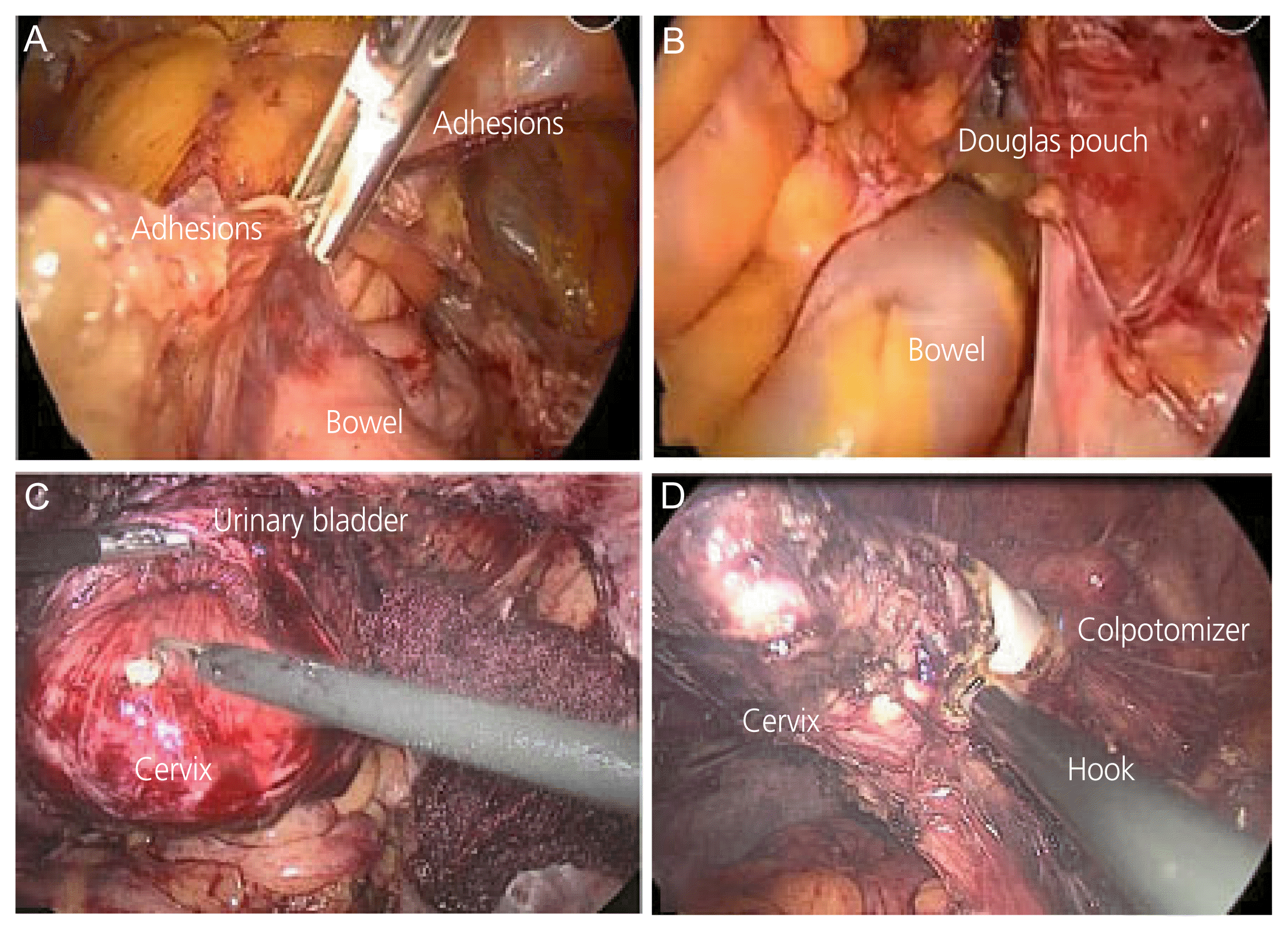
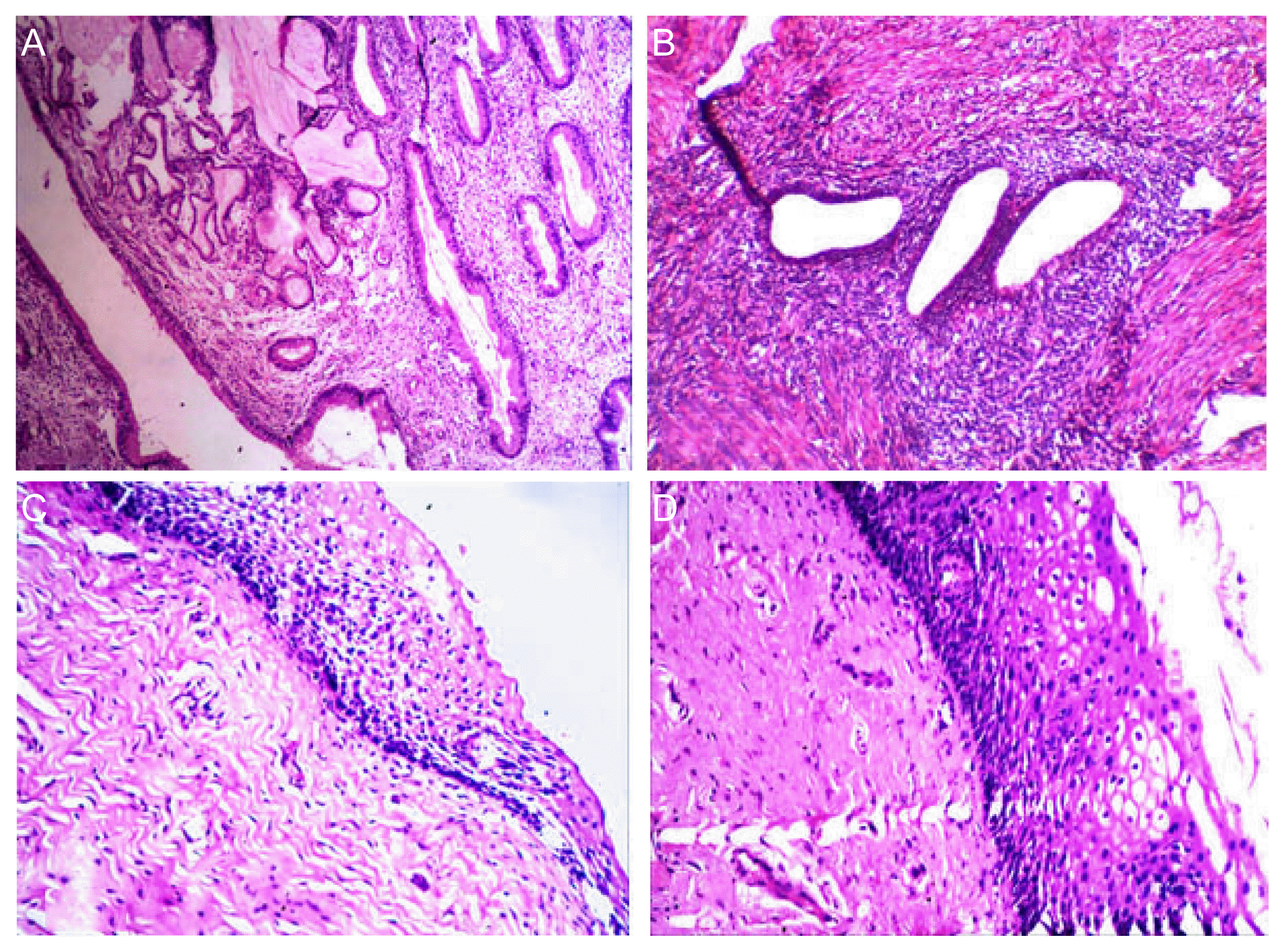




 PDF
PDF Citation
Citation Print
Print





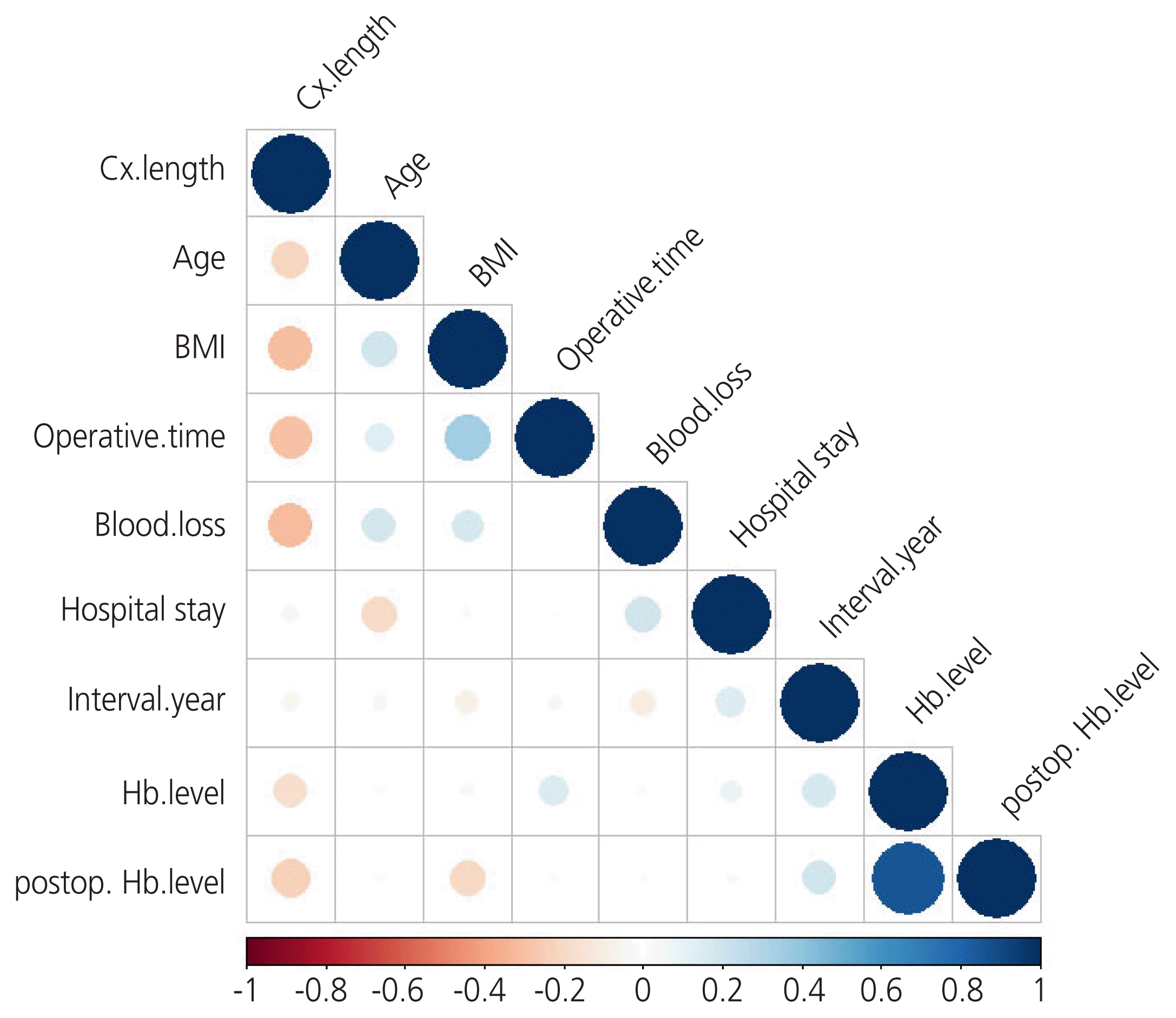
 XML Download
XML Download